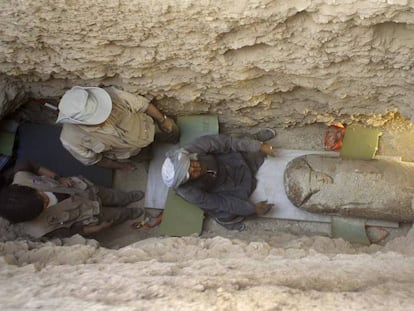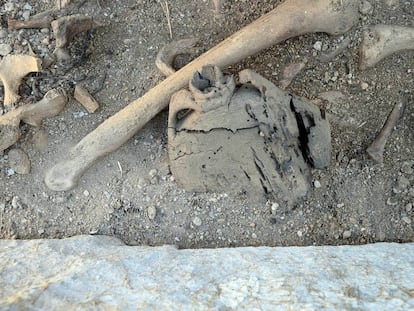The Tartessos mystery slowly comes to light
An excavation in Badajoz offers surprising insight into this ancient civilization that thrived in the southwest of the Iberian Peninsula from the 9th to the 5th centuries BCE
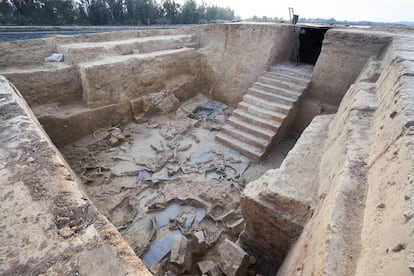
Around 2,500 years ago, close to what is known today as the municipality of Guareña in Spain’s Badajoz province, locals gathered in an enormous two-story building for a banquet and a ritual ceremony in which they sacrificed dozens of valuable animals. Afterwards, they burned the building and buried the remains before abandoning the site.

Frozen in time thanks to the mix of ashes and clay that has protected it down the ages, this building and what happened in it before it was destroyed could provide the key to understanding the late Tartessos period. It may also help to explode some of the myths concerning Hercules and King Arganthonios and this great civilization that flourished in the southwest of the Iberian Peninsula by trading with the Phoenicians from the 9th to the 5th centuries BCE. The people of Tartessos are known to have been both rich and clever, so much so that they impressed Greek historians. Their civilization lasted approximately five centuries but its decadent end has long been shrouded in mystery.
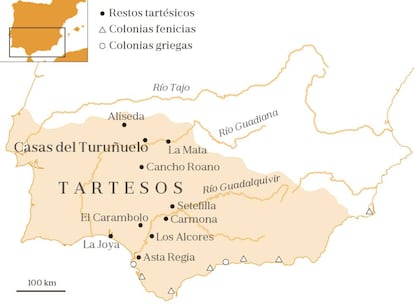
“There is still a lot of analysis to be done and a lot of buildings to unearth,” say Sebastián Celestino and Esther Rodríguez, archaeologists from the Spanish National Research Council (CSIC) in charge of the Turuñuelo dig that began in 2015. “We’ve scarcely excavated 10 percent.” The remains of 22 sacrificed horses, three cows, two pigs, two sheep and one donkey not only amount to an extraordinary discovery– the biggest example of animal carnage in the entire Mediterranean to date– they also offer new insight into what happened there.
This building is not the only one to have been burned and buried between the end of 500BCE and the start of 400BCE in the region of Las Vegas Altas de Guadiana, whose economic importance grew when refugees flooded in from the heart of Tartessos further south between what is now Seville and Huelva. A series of similar though more basic constructions, such as the sanctuary of Cancho Roano in Zalamea de la Serena or La Mata in Campanario, which housed the territory’s administrative buildings, would also wind up being destroyed by their owners.

This destruction appeared to have taken place almost simultaneously and in some cases after a big celebration such as the one that took place in Turuñuelo. What sets Turuñuelo apart is the scale of the animal sacrifice, and the fact that the horses, which symbolized abundance and distinction, were arranged theatrically in pairs and, in some instances, with their heads entwined.
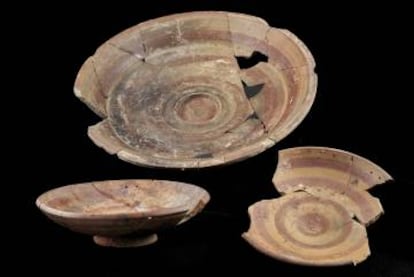
Together with sacks of grain, goblets, scales and precious bronze fragments, this suggests that the people here believed they had incurred the wrath of the gods and were trying to remedy the situation by sacrificing their most valuable possessions, according to Sebastián Celestino.
Previously it was held that the Tartessos civilization floundered when its people fled from an imminent invasion by Celts from the north. However, the almost complete absence of weapons and the enormous amount of time and effort required to bury such a building, estimated to cover almost a hectare of land, undermines this theory. Experts now believe that rather than an invasion, the people of Tartessos felt they were being punished by the gods by an abrupt change of climate, a natural catastrophe or an epidemic.
The archaeologists involved in the excavation insist, however, that all theories are provisional for now. More will be deduced once they know how the animals were sacrificed, how old they were when they met their death and if they were gutted after execution.
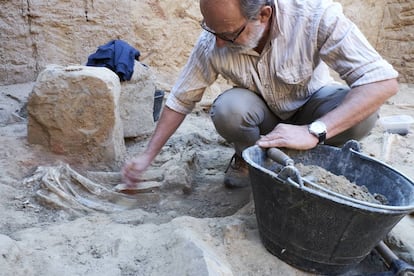
So far, archaeologists have unearthed a room filled with jewels, pottery, seeds, bronze grates and a huge and exquisitely preserved cauldron. Another vast room has been discovered, furnished with a typically Tartessian adobe altar representing a bull hide and a strange bathtub-cum- coffin. There is also the three-meter high staircase made from a kind of cement that predated the Romans’ use of concrete by a century, and which leads into the courtyard where the animals were found. The fact that the two floors are so well preserved makes the building unique in the Western Mediterranean.
Not surprisingly, the excavation has sparked a great deal of interest within the scientific community, and experts have been keen to collaborate. Rodríguez and Celestino, who is also director of the Mérida Archaeological Institute, have welcomed the collaboration as the project is under-funded, like so many in Spain, and relies on just one grant from the Provincial Council of Badajoz. Now, however, Madrid’s Autonomous University is helping put together some of the animal remains while Cambridge University is analyzing fragments of fabric, some of which could prove to be the oldest wool ever found on the Peninsula.
There is also a team of engineers from the University of Extremadura who have used a scanner with a view to reproducing the site in real size and in 3D. This will help the development of specific algorithms that will enable the fragments to be reassembled into complete objects such as the bathtub or the patio door, explains researcher Pilar Merchán. An exact replica of the patio where the animals were sacrificed will be particularly useful if the site is ever opened to the public.
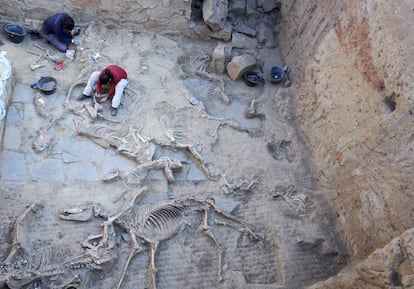
Before the skeletons deteriorate, six zooarchaeologists from different research centers are transferring them to their respective laboratories for analysis and, in some cases, to prepare them for conservation– after which they will be returned to the Archeological Museum of Badajoz. “When it was just a case of two horses, I could manage,” says Rafael Martínez Sánchez, an archaeological expert in animal remains from the University of Granada. “But when more and more emerged, I could see I would need help.” An impromptu team was subsequently cobbled together on the back of a dinner in Mérida following a talk on horse sacrifice in the Iberian Peninsula during the Bronze Age.
Extracting the remains of 30-odd animals from the ground after 2,500 years with a pick and shovel is delicate work that requires a certain amount of consideration. While this is being decided, the experts go over their first impressions– a donkey with an enormous head; a pig lacking a rib, which could have been eaten indeed during the banquet; a horse whose hooves may have been removed before it was sacrificed, and so on.
The experts are clearly overwhelmed but also excited; it’s rare to come across such artifacts and biofacts offering data that will reveal what they ate and what illnesses they were subject to. Through DNA analysis, it may also be possible to find out more about the domestication process of the horse on the Peninsula, according to Jaime Lira from Complutense University in Madrid and Carlos III Health Institute.
The people of Tartessos felt they were being punished by the gods by an abrupt change of climate, a natural catastrophe or an epidemic
There is also great potential here for discovering not only how the people of Tartessos lived but what relationship they had with the distant kingdoms on the other side of the Mediterranean. In Turuñuelo, Greek objects have been unearthed and in the architecture of the stairway, building blocks such as those used in Greece can be seen.
Celestino and Rodríguez started the dig with the help of Melchor Rodríguez Fernández, a laborer specializing in archaeological sites, and since then a proliferation of unique objects, buildings and the oldest, best preserved biofacts in the Mediterranean’s protohistory have been providing an excellent opportunity to study this semi-mythical civilization. And what has emerged so far is just the tip of the iceberg: an estimated 90% still remains underground.
English version by Heather Galloway.

